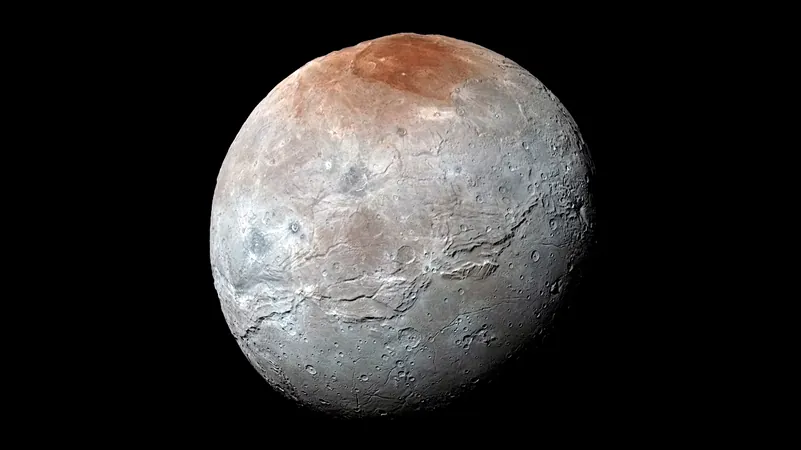
Breakthrough Discovery: Carbon Dioxide and Hydrogen Peroxide Detected on Charon's Surface Using JWST!
2024-10-06
Overview of the Discovery
In a stunning development for planetary science, scientists have detected carbon dioxide (CO2) and hydrogen peroxide (H2O2) on the surface of Charon, Pluto's largest moon, through groundbreaking observations made by the James Webb Space Telescope (JWST). This significant finding sheds light on the moon's chemical composition and the processes influencing its surface.
Significance of Charon's Composition
Charon has been a focal point for researchers who aim to understand its primitive composition and how it has evolved due to radiation and photolytic effects. Up until now, studies have primarily been limited to spectral data below 2.5 micrometers, leaving crucial elements of Charon’s surface composition unresolved.
Advanced Observations by JWST
Thanks to the advanced capabilities of JWST, particularly its Near Infrared Spectrograph (NIRSpec), scientists have now made these crucial detections in Charon’s northern hemisphere. These findings add to a complex chemical inventory already identified on the moon’s surface, which includes crystalline water ice, ammonia-bearing compounds, and dark tholin-like substances revealed by both ground and space observations.
Interesting Findings on Hydrogen Peroxide
The presence of hydrogen peroxide is particularly intriguing as it suggests active radiolytic and photolytic processes at work. These processes are driven by solar ultraviolet light, Lyman-alpha photons from the interplanetary medium, and particles from the solar wind, along with galactic cosmic rays. This indicates that Charon’s surface is not just a static relic but rather a dynamic environment undergoing continuous transformation.
Spectral Analysis of Carbon Dioxide
Spectral modeling revealed that the carbon dioxide is found in its pure crystalline form, and possibly in an intermixed state with other materials. The findings suggest that CO2 likely originates from subsurface sources, exposed on the surface and influenced by various environmental factors—including the irradiation of hydrocarbons mixed with water ice and the interaction between energetic carbon ions and the surface.
Implications of the Discovery
This new data represents a major step forward in our understanding of Charon, aligning with earlier insights gained from the New Horizons mission. As researchers continue to analyze the spectral data, they have noted consistent observations across multiple sessions, showcasing absorption bands associated with water ice, ammonia, and the newly discovered CO2 and H2O2.
Broader Impacts on Astrobiology
The implications of finding such compounds on Charon are profound. It opens avenues for exploring not only the chemical processes occurring on icy bodies in the outer solar system but also potential astrobiological conditions that may exist elsewhere in the universe.
Conclusion
Stay tuned for more revelations from the JWST as researchers delve deeper into the cosmic mysteries of our solar system and beyond!




 Brasil (PT)
Brasil (PT)
 Canada (EN)
Canada (EN)
 Chile (ES)
Chile (ES)
 España (ES)
España (ES)
 France (FR)
France (FR)
 Hong Kong (EN)
Hong Kong (EN)
 Italia (IT)
Italia (IT)
 日本 (JA)
日本 (JA)
 Magyarország (HU)
Magyarország (HU)
 Norge (NO)
Norge (NO)
 Polska (PL)
Polska (PL)
 Schweiz (DE)
Schweiz (DE)
 Singapore (EN)
Singapore (EN)
 Sverige (SV)
Sverige (SV)
 Suomi (FI)
Suomi (FI)
 Türkiye (TR)
Türkiye (TR)